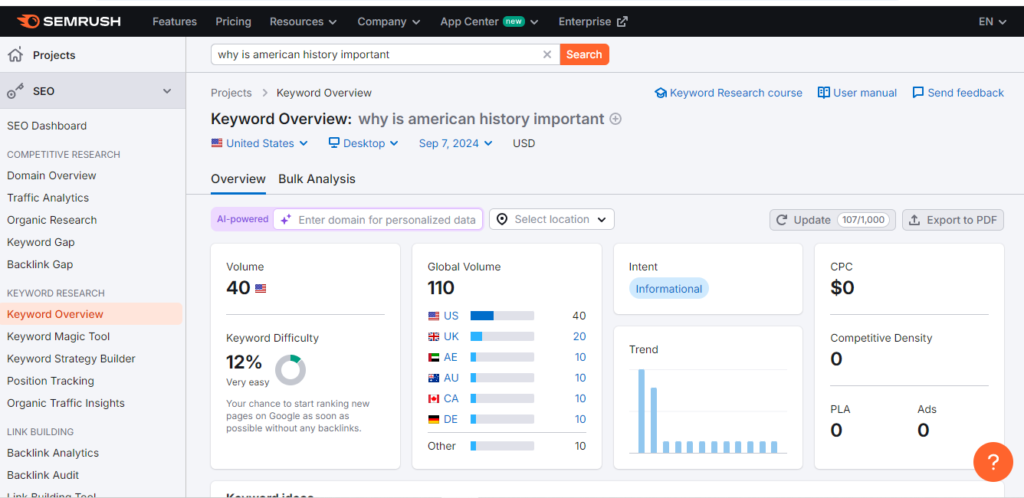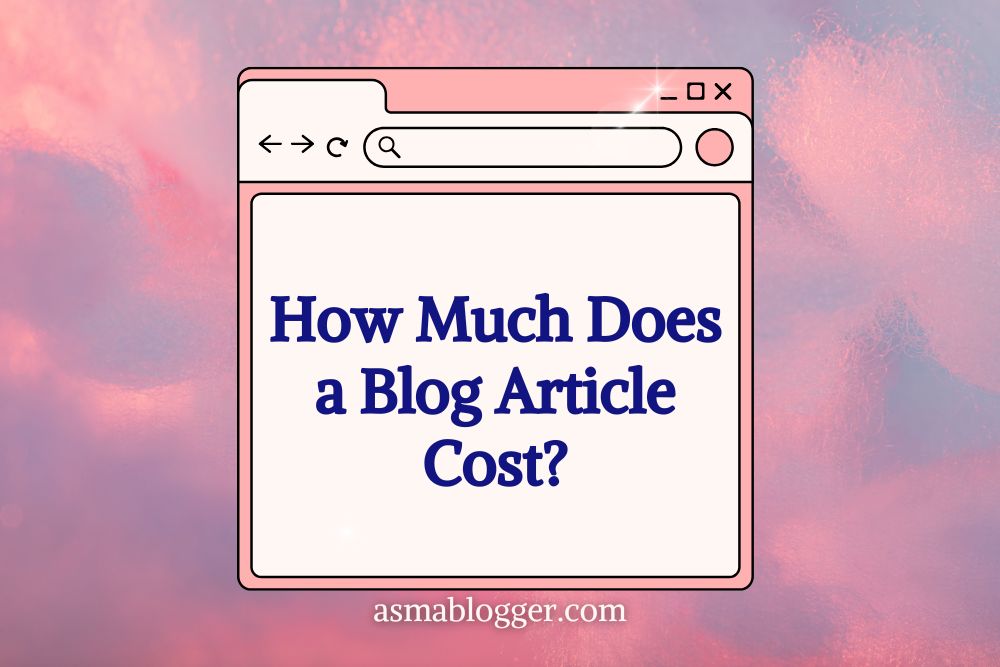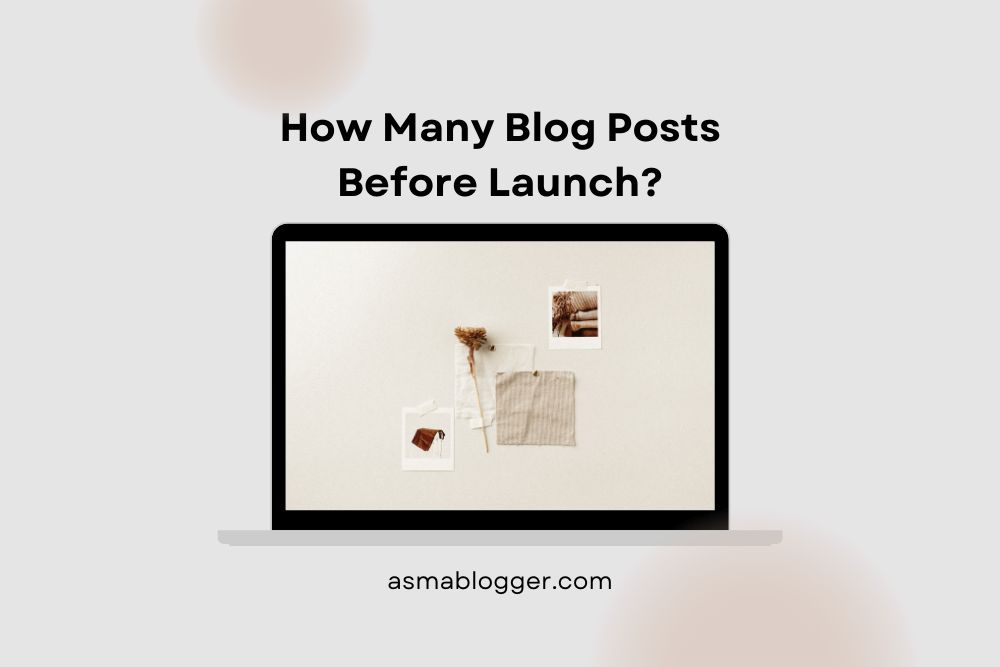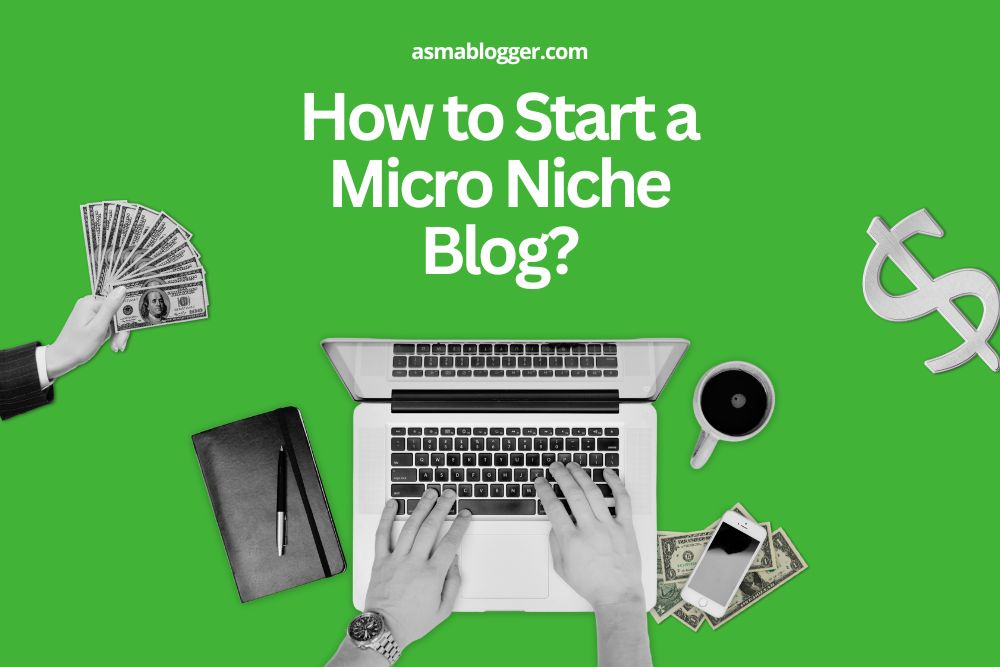Is blogging hard? Well, here’s a fact: 80% of blogs fail within the first year because people underestimate the effort it takes to succeed! But don’t let that scare you off. Blogging can be one of the most rewarding experiences if you’re armed with the right strategies. Sure, it takes time, dedication, and a touch of creativity, but with a solid plan, you can turn your blog into a rewarding platform. Whether you’re dreaming of a side hustle or aiming for a full-time gig, I’m here to share proven ways to blog like a pro. Let’s get started!
Table of Contents
ToggleWhy Do People Perceive Blogging as Hard?
1. Time Commitment: More Than Just a Weekend Hobby
I’ll be honest; I underestimated how time-consuming blogging could be.
- Research Takes Time: Before writing, I’d spend hours just researching. Even for a simple post, you want facts, examples, and data to make it worthwhile.
- Drafting and Editing: The first draft is rarely perfect (actually, it’s usually terrible). Editing takes as long as—or longer than—writing.
- Promotion Efforts: Promoting on social media, engaging with readers, and tweaking for SEO eats up hours.
- Tip: Block out specific days for each step. Monday for research, Tuesday for drafting, and so on. It helps break the process down and feels less overwhelming.
2. The Pressure of Creating Quality Content
Everyone says, “Just write good content,” but what does that even mean?
- Stand Out in the Crowd: There are millions of blogs. How do you make yours unique? This question kept me up at night.
- Keeping It Valuable: Readers want actionable tips or insights they can’t find elsewhere. Writing posts that solve a problem is key.
- Personal Voice: Finding your voice takes time. For months, I’d second-guess myself—was I too casual? Too formal?
- Tip: Start by solving one specific problem for your audience in each post. Narrow focus works better than trying to cover too much.
Read quality, all the time, every day. Then write. And make sure you’re writing something that – even just a little bit – is different from something anybody else has ever written. Or you say something in a different way. – James Altucher
Related Post: How to Write Blog Posts as a Non-Writer: Quick & Easy Guide
3. Technical Jargon and Website Woes
Setting up a blog felt like learning another language—HTML, CSS, SEO.
- Getting the Basics Right: Themes, plugins, hosting… I spent days figuring out what half of these even meant.
- SEO Isn’t Intuitive: Keywords, alt texts, internal links—it’s like solving a puzzle, but no one gives you the pieces upfront.
- Tech Glitches: Let’s not talk about the time my site crashed because I accidentally deleted a key file. (Pro tip: Backups save site!)
4. Building an Audience Feels Like Talking to a Void
Ah, the infamous “crickets” phase of blogging.
- No Instant Gratification: When you’re new, nobody knows your blog exists. It takes time and effort to grow.
- Networking Is Critical: Blogging isn’t just about writing; it’s about connecting. Commenting on others’ blogs or guest posts helped me immensely.
- Social Media Isn’t a Magic Wand: Just because you post your blog link on Twitter doesn’t mean people will click. Engagement matters more than just sharing.
- Tip: Focus on one platform initially (like Pinterest or Twitter) and build relationships there. Quality over quantity.
Related Post: How to Build a Blog Following? Expert Tips
5. Monetizing Doesn’t Happen Overnight
Here’s the thing—making money from blogging is like planting a tree. It takes time to grow.
- Traffic First, Money Later: Without traffic, affiliate links or ads won’t bring in much.
- Building Trust: Readers need to trust you before they buy anything you recommend. That takes consistency.
- Diversified Income Streams: From affiliate marketing to selling services, there’s no “one size fits all.” I tested a lot before finding what worked for me.
- Tip: Start by monetizing with small, manageable projects like freelance writing gigs to keep the pressure off your blog.
Skills You Need to Make Blogging Easier
Let me walk you through the ones that made the biggest difference for me.
1. Writing Like a Pro (Without Being Perfect)
Let’s face it, writing is the backbone of blogging. But you don’t need to sound like Shakespeare. Focus on clarity, keep sentences short where they make sense, and structure your ideas so readers can follow along easily.
Practical Tip: Always edit. I use Grammarly to catch typos and awkward phrasing, and it’s saved me tons of time. And don’t stress about perfection; publish, learn, and improve over time.
2. Mastering the Art of SEO
SEO is like the secret sauce that gets your blog noticed. Learn the basics: keywords, meta descriptions, and optimizing your headlines.
Practical Tip: Use tools like Ubersuggest, SEMrush, Ahrefs, or Google Keyword Planner. Start small—choose keywords with less competition until you’re confident.
Related Post: Content-Centric SEO: A Comprehensive Guide
3. Social Media Isn’t Optional
Social media platforms can amplify your reach, but each one works differently. I struggled with Instagram until I realized my audience preferred carousels over long captions. Small shifts like that can make a big difference.
Practical Tip: Pick 1-2 platforms where your audience hangs out and focus there. Don’t spread yourself too thin.
4. Research
Good research sets you apart from the fluff online. Whether you’re using statistics, interviews, or personal stories, readers can tell when you’ve put effort into your content.
Practical Tip: Bookmark trusted sources and read other blogs in your niche regularly. Bonus: leaving thoughtful comments on their blogs builds relationships and visibility.
5. Basic Design Skills Help More Than You Think
Graphics like infographics or images make your blog more engaging. Tools like Canva simplify the process, even if design isn’t your strong suit. Visuals also make your posts easier to share.
6. Connecting with Other Bloggers
Blogging isn’t a solo sport. Networking with other bloggers can lead to guest post opportunities, backlinks, and even friendships. I was nervous at first, but commenting on blogs and DMing others helped me break the ice.
Practical Tip: Be genuine. People can spot insincerity a mile away. A thoughtful comment about their work goes further than a generic “Great post!”
7. Consistency > Perfection
This is where most people give up. Blogging success isn’t about doing everything perfectly; it’s about showing up regularly. Some weeks, I publish a masterpiece. Other weeks, it’s a short, simple post—but the key is that I post.
Practical Tip: Create a content calendar. Even if you start with one post a week, that consistency builds trust with your readers and search engines.

How to Overcome Common Blogging Challenges
Over the years, I’ve faced many struggles, and here’s how I’ve tackled them.
1. Finding Your Niche
Picking a niche can feel overwhelming, but here’s what helped me: I listed my interests and then matched them with topics I could write about consistently. Narrowing it down not only clarified my direction but also helped me stand out.
Tip: If you’re stuck, research your competitors and look for gaps they haven’t covered.
2. Understanding Your Audience
I started surveying my readers and diving into their struggles. Knowing their pain points made creating valuable, relevant content much easier.
Quick win: Hang out where your audience does (like forums or Facebook groups) and pay attention to their questions.
3. Beating Writer’s Block
I’d plan posts a month ahead, so I never sat staring at a blank screen, wondering what to write next.
- Keep a content calendar: Jot down ideas as soon as they pop into your head.
- Batch writing: Set aside a day to write multiple posts at once.
- Switch it up: When I’m stuck, I write in bullet points or just ramble. Sometimes you just need to start.
Pro tip: Batch-write on creative days to build a backlog for when inspiration is low.
4. Boosting Traffic
Every blogger starts with zero traffic—yes, even the pros. What worked for me was SEO.
- Keyword research: I use tools like Ubersuggest to find keywords with low competition but decent search volume.
- Internal linking: Don’t let your old posts gather dust—link them in your new ones.
- Focus on evergreen content: Posts that are always relevant, like “How to Start a Blog,” keep bringing in readers over time.
And don’t ignore social media. LinkedIn still drives decent traffic if you’re consistent.

Related Post: Can You Use LinkedIn as a Blog? Pros, Cons, and Best Practices
5. Maintaining Quality
It’s easy to rush posts when you’re trying to stay consistent. I learned to slow down and focus on creating detailed, valuable content. Using tools like Grammarly and revisiting posts a day later helped me catch errors.
6. Promoting Your Blog
You can write the best posts in the world, but if no one sees them, what’s the point? Social media platforms like Pinterest and Instagram brought me solid traffic when I posted engaging visuals and catchy captions.
Tip: Repurpose content. A blog post can easily become a series of Instagram slides or a newsletter.
7. Navigating Technical Hurdles
I won’t lie—figuring out site speed and backups frustrated me. Choosing a reliable hosting service and spending time on basic website maintenance kept headaches to a minimum.
8. Managing Expectations
We all have days when life takes over. But consistency doesn’t mean posting daily—it means showing up regularly.
Here’s how I stay on track:
- Write in advance. A few evergreen posts in your drafts can save you during busy weeks.
- Set realistic goals. If you can only post once a week, that’s fine. Just stick to it.
Proven Strategies to Make Blogging Rewarding
Blogging is more than just a creative outlet—it can be a game-changer for your finances and career if approached strategically. I’ve tried and tested countless methods, and here are the ones that truly work.
1. Pick a Profitable Niche
Choosing a niche isn’t just about passion; it’s about profitability. For instance, niches like personal finance or tech often have higher ad revenue and affiliate opportunities. But don’t overcomplicate this—combine what you love with what people are actively searching for.
When I switched to a niche I cared about, writing became easier, and my audience grew faster.
Related Post: How to Start a Micro Niche Blog and Make Money Fast?
2. Master Content Monetization
Bloggers can earn through diverse methods—ads, sponsorships, or selling digital products. For example, I’ve seen bloggers make $200-$10,000 monthly just with ad revenue based on their page views. My advice? Don’t rely on one income source. Experiment with affiliate marketing, offering online courses, or even selling templates.
3. Invest in Tools
To grow faster, invest in tools like SEO software, social media schedulers, or email marketing platforms. I started using a basic keyword tool, and within a few months, my traffic doubled. Sometimes, spending a little upfront makes a massive difference.

4. Engage With Your Audience
Responding to comments, emails, or even DMs can turn casual readers into loyal followers. Once, I responded to a reader’s question about affiliate marketing, and they later became a paying client for my consulting services. Small connections can lead to big opportunities.
Related Post: What Are the Benefits of Email Communication? My Insights
5. Diversify Revenue Streams
Don’t just stop at blogging—consider expanding into related areas. I started my personal branding on Linked In to repurpose my content, and though it was slow initially, the added revenue through clients made it worth it. A good mix of income streams can cushion the unpredictable nature of blogging income.
6. Leverage Analytics
Check what’s working and double down on it. For example, I noticed my how-to posts had more traffic than other pieces, so I shifted focus. Tracking and tweaking your strategy based on data isn’t just smart—it’s essential.
7. Sell Expertise
If you’ve mastered a skill through blogging, turn it into a product. People value actionable advice, so don’t be afraid to share what you’ve learned.
Steps to Start Blogging
So, you want to start a blog? That’s awesome! I still remember the day I decided to launch mine—equal parts excitement and confusion. There’s so much advice out there that it’s easy to feel overwhelmed. But don’t worry, I’ll break it down step by step.
1. Choose a Blogging Platform
The first big decision is picking where to build your blog. For me, WordPress was a no-brainer because it’s customizable and has plugins for everything under the sun. But if you’re looking for something simpler, platforms like Wix or Squarespace are decent options, too. Just make sure the platform aligns with your goals—whether that’s monetization, sharing hobbies, or both.
2. Claim a Domain Name
Think of your domain name as your blog’s home address. It should be short, easy to remember, and match the vibe of your blog. For instance, if you’re blogging about vegan recipes, something like PlantPlate.com might work.
Pro tip: Use a domain-checking tool (like Hostinger) to ensure your dream name isn’t already taken.

3. Get Web Hosting
Your host is like the land your blog lives on—it keeps your site online and running smoothly. I recommend Hostinger, Bluehost, or SiteGround for beginners because they’re reliable and have helpful support teams. Some hosting providers even bundle domain registration, which saves you an extra step.
4. Install Your Blog
With WordPress, this is usually as simple as clicking a button (most hosts have a “one-click install” feature). If you get stuck, your hosting provider likely has a tutorial or support team to guide you.
5. Pick a Theme
You can choose from hundreds of free or premium themes to find one that matches your style. I always go for something mobile-friendly because, let’s face it, everyone’s on their phones these days.
6. Customize Your Blog
This step is where you make your blog feel like you. Change the colors, play with fonts, and add plugins to boost functionality. For example, I use an SEO plugin to help my posts rank better on Google and an email pop-up plugin for easy communication with readers.
7. Set Up Essential Pages
Before writing your first post, create a few foundational pages:
- About Me: Share who you are and why you started the blog. (Trust me, readers love a good backstory.)
- Contact: Make it easy for readers or potential partners to reach you.
- Privacy Policy: If you collect any kind of data, this page is a must-have for legal reasons.
8. Plan Your Content
Consistency is key. Start by brainstorming topics that interest your audience—think “what would I Google if I were them?” I also use a content calendar to stay on track.
Related Post: How Many Blog Posts Before Launch: Tips for a Strong Start
9. Write and Publish Your First Post
Don’t aim for perfection—just focus on creating something valuable. Whether it’s an in-depth guide, a personal story, or a list of tips, let your personality shine through.
10. Promote Your Blog
Writing is only half the battle; promoting is where the magic happens. Share your posts on social media platforms, join blogging groups, and do guest posting. When I started, engaging with other bloggers in my niche really helped me grow.
11. Monetize Your Blog
Once your blog has some traction, you can explore ways to make money—ads, sponsored posts, affiliate links, or even your own products. But don’t rush into it; focus on building trust with your readers first.
Related Post: How to Make Money with a Blog Without AdSense: 6 Best Options
Final Thoughts: Is Blogging Hard?
Blogging might seem hard at first, but with clear goals, strategic planning, and consistent effort, it can transform into a rewarding journey. Whether you’re starting as a hobby or aiming for a full-time career, remember to take one step at a time. Blogging is about learning and adapting to what works best for you.
Now it’s your turn! Share your tips in the comments below—let’s inspire each other. And if you need personalized guidance to kickstart or grow your blog, I’m here to help. Feel free to reach out to me for professional services. Let’s make your blogging dreams a reality!














